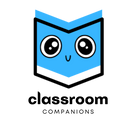When a child struggles to read, it affects everything—grades, confidence, behavior, and even their sense of identity. I’ve worked with countless students who felt broken, when really, the problem wasn’t them. It was the instruction.
The best reading programs for struggling readers aren’t gimmicks. They’re built on decades of research about how the brain learns to read. In this article, I’ll break down what actually works, why it works, and how to choose the right system that will finally help your child (or your students) thrive.
1. Why Some Kids Struggle to Read (And It’s Not Their Fault)
Learning to read isn’t natural—it’s a skill that must be taught. While most children pick it up with structured instruction, many need more support. Here’s why:
-
Phonological deficits: Some students have trouble hearing, isolating, or manipulating sounds in words.
-
Lack of explicit instruction: If early reading instruction skips phonics, some students never learn how to decode.
-
Instructional gaps: Even bright students fall behind if they miss key concepts or move too quickly through foundational skills.
-
Cognitive or language-based differences: Conditions like dyslexia make it harder to form connections between letters and sounds without structured support.
The takeaway? Struggling readers don’t need “more of the same.” They need a different approach—one grounded in science.
2. The Science of Reading: What the Research Really Says
The “Science of Reading” isn’t a trend. It’s a body of evidence drawn from neuroscience, linguistics, and cognitive psychology that tells us exactly how kids learn to read—and why some don’t.
Decades of research show that strong readers rely on two systems:
-
Phonological processing – the ability to hear and manipulate sounds in spoken language
-
Orthographic mapping – the brain’s ability to permanently store written words by connecting sounds to letters
Struggling readers often lack the first, which makes the second nearly impossible—unless we give them structured, systematic, and explicit phonics instruction. Programs built around science of reading intervention programs focus on that exact pathway: teach sounds, connect them to letters, practice them in context, and review consistently.
3. Key Features of Effective Reading Programs
Not all programs are created equal. The most effective ones for struggling readers share these characteristics:
Explicit Instruction
There’s no guessing. Students are taught step-by-step how written English works—starting with letter-sound correspondences, then blending, syllable types, and spelling rules.
Systematic Scope and Sequence
Skills build logically—from easiest to most complex—and nothing is taught randomly. This structure helps students develop confidence and predictability.
Cumulative Review
Effective programs don’t assume mastery after one lesson. They spiral back and review previously taught material frequently, so learning sticks.
Multisensory Teaching
Students see it, hear it, say it, write it, and manipulate it with hands-on tools. This strengthens brain pathways and supports all types of learners.
Decodable Text Practice
Students read stories that align with what they’ve been taught. Decodable readers 1st grade are ideal for reinforcing sound-spelling patterns without overwhelming the reader with untaught words.
4. Choosing the Right Program: Questions to Ask Before You Buy
Before you commit to a reading intervention, ask these questions:
-
Does the program start with phonemic awareness and phonics, not sight words?
-
Is it aligned with the science of reading?
-
Does it include decodable texts that match the phonics sequence?
-
Is it appropriate for your child’s age and skill level (not just their grade)?
-
Are assessments built in to monitor progress?
If the program focuses on guessing strategies, leveled readers, or memorization, that’s a red flag. Look for materials that are grounded in structure and repetition—like orton gillingham materials—which have been used successfully for decades with children who need more explicit instruction.
5. What Reading Success Actually Looks Like for Struggling Students
Reading success doesn’t mean your child will suddenly love books overnight. It means:
-
They begin to decode new words using patterns they’ve learned
-
They can read a passage with fewer hesitations or self-corrections
-
They retain words from one session to the next
-
They feel more confident—even if the road is still bumpy
You’ll know things are working when your child stops saying, “I can’t read this” and starts saying, “Let me try.”
For younger readers, especially those in K–1st grade, kindergarten decodable books are a great place to begin. These books match exactly what the child is learning in phonics, helping reinforce concepts in real-time reading. When instruction and reading material are aligned, kids grow faster.
6. Beyond Reading: The Emotional Payoff
When a child struggles with reading, it can impact their entire academic identity. I’ve seen kids withdraw, act out, or even claim to “hate school” because reading made them feel unsafe.
The right reading program can completely transform that story.
Once students realize that reading isn’t a guessing game—and that it can make sense with the right tools—they begin to reframe how they see themselves. They stop seeing themselves as “behind” and start seeing themselves as “learners.”
7. Final Thoughts: You Don’t Need Fancy, You Need Proven
If you're a parent or teacher trying to help a struggling reader, remember this: it’s not about the flashiest program or the biggest price tag. It’s about alignment with what actually works.
It’s not just about catching up—it’s about finally unlocking the door to literacy.
We at Classroom Companions are here to support you with the best reading instruction materials possible.
